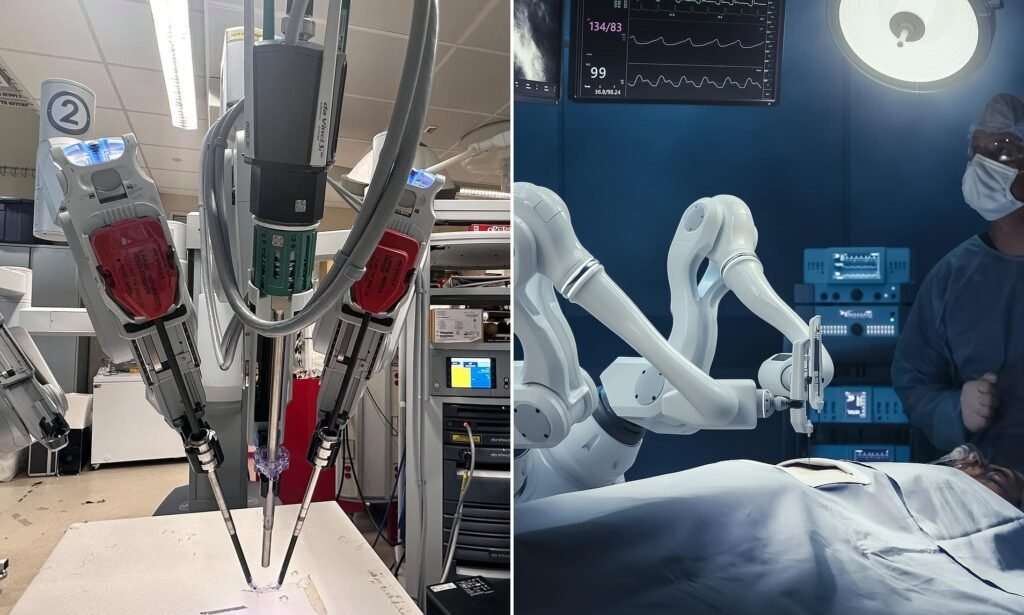Advancements in Robotic Surgery: A New Era in Healthcare
Robots equipped with artificial intelligence (AI) may soon be performing surgeries on humans within the next decade, following successful trials on pigs. These machines have demonstrated their ability to remove a gallbladder from a pig using tools that can cut, clip, and grasp soft tissue. The robot was trained using AI technology similar to that of ChatGPT, by watching videos of human surgeons performing similar procedures.
After being shown these videos, the machine successfully performed the same operation eight more times on dead pigs at Johns Hopkins University, achieving a 100% success rate in just over five minutes. Researchers believe this could mark a significant step towards robots replicating the skills of top human surgeons, potentially revolutionizing healthcare.
Although the machines were slightly slower than human doctors, their movements were smoother and they made shorter trajectories between tasks, according to the American researchers. Mistakes were corrected during the process, and different tools were requested based on anatomical differences, as noted in their paper published in Science Robotics.
The team described their findings as “a milestone toward clinical deployment of autonomous surgical systems.” In just 17 steps, the robots were able to cut the gallbladder from the liver, apply six clips in a specific order, and remove the organ.
“We were able to perform a surgical procedure with a really high level of autonomy,” said Axel Krieger, an assistant professor of mechanical engineering at Johns Hopkins. “In prior work, we were able to do some surgical tasks like suturing. What we’ve done here is really a full procedure. So I think it’s a really big landmark study that such a difficult soft tissue surgery is possible to do autonomously.”
The Royal College of Surgeons has called the breakthrough “an exciting development that shows great promise.” A leading British expert on robotic surgery described the results as “impressive” and “novel,” adding that it brings the world closer to full autonomy in surgery.
Currently, about 70,000 robotic surgeries are performed annually in the UK, all led by humans except for bone-cutting in hip and knee procedures, which are semi-autonomous. Plans are already underway to introduce more robotic surgery into the UK’s healthcare system.
Health Secretary Wes Streeting recently emphasized that increasing robotic surgery is essential for reforming the NHS and reducing waiting times over the next 10 years. The NHS has also stated that nine out of 10 keyhole surgeries in the next decade will be conducted by robots, a significant increase from the current one in five.
Dr. McGrath, chair of NHS England’s robotics steering committee, believes that surgeons could eventually oversee multiple operations simultaneously and perform simple procedures like gallbladder removals or hernia operations more efficiently. Robots could also offer greater precision, causing less damage to surrounding tissues.
However, there are still challenges to overcome before robots can operate on living patients. For instance, robots may react differently to a breathing body compared to a dead animal. Other factors such as flowing blood, fluid on the camera, injuries, and smoke from cauterization must also be considered.
“The next step must involve a careful exploration of the nuances within this rapidly evolving field to assess how these findings can be safely and effectively translated into a human pilot,” said Nuha Yassin, the lead on robotic surgery at the Royal College of Surgeons of England. “Only then can this approach move toward becoming a sustainable model for the future.”

